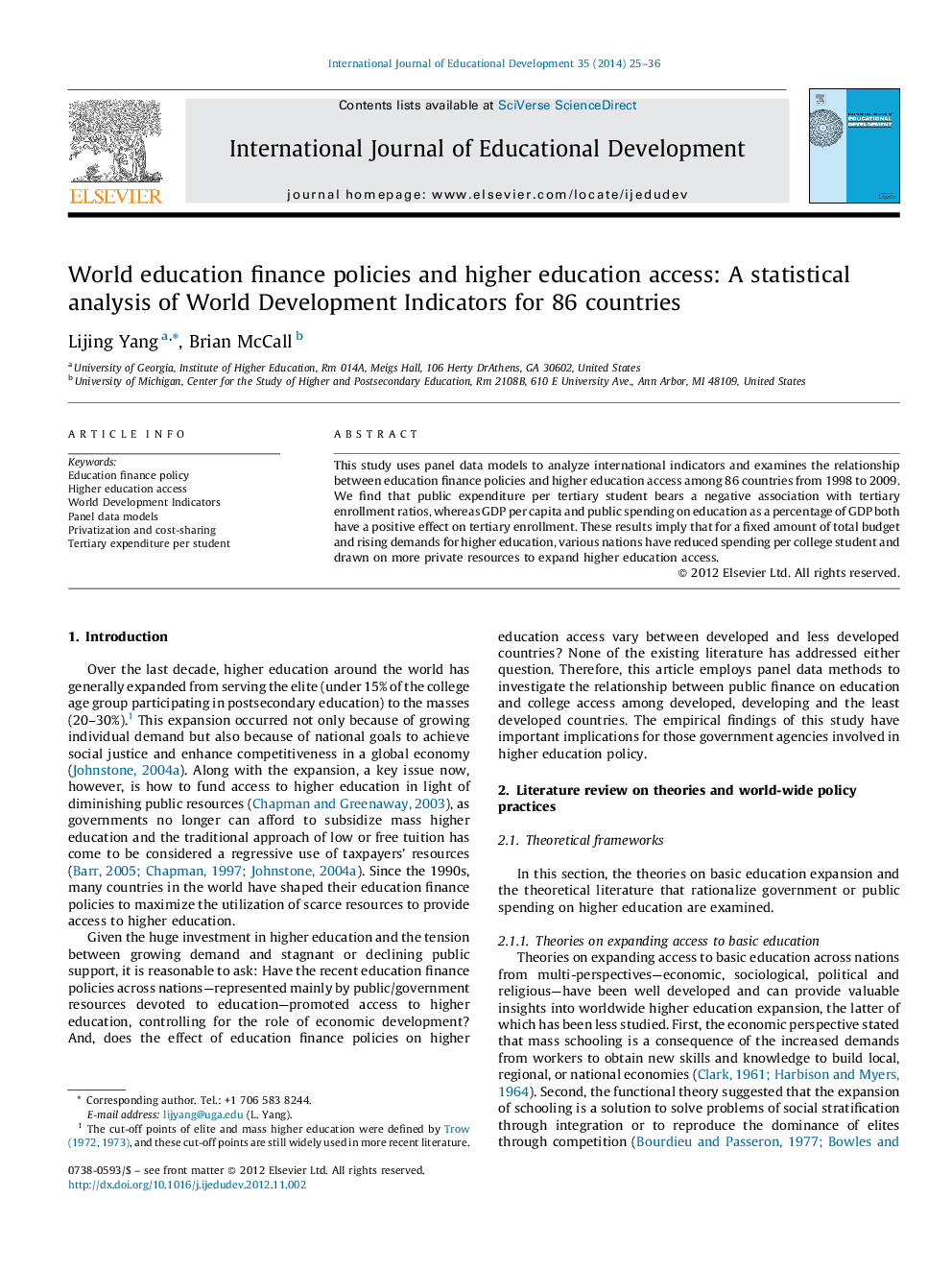| کد مقاله | کد نشریه | سال انتشار | مقاله انگلیسی | نسخه تمام متن |
|---|---|---|---|---|
| 356172 | 1435126 | 2014 | 12 صفحه PDF | دانلود رایگان |
This study uses panel data models to analyze international indicators and examines the relationship between education finance policies and higher education access among 86 countries from 1998 to 2009. We find that public expenditure per tertiary student bears a negative association with tertiary enrollment ratios, whereas GDP per capita and public spending on education as a percentage of GDP both have a positive effect on tertiary enrollment. These results imply that for a fixed amount of total budget and rising demands for higher education, various nations have reduced spending per college student and drawn on more private resources to expand higher education access.
► We use panel data models to analyze international indicators from the World Bank.
► We examine the relationship between education finance policies and higher education access among 86 nations over 1998–2009.
► We find public expenditure per tertiary student bears a negative association with tertiary enrollment ratios.
► We find GDP per capita and public spending on education (as % of GDP) both have a positive effect on tertiary enrollment.
► We conclude many nations have reduced per-student spending and drawn on more private resources to expand college access.
Journal: International Journal of Educational Development - Volume 35, March 2014, Pages 25–36
